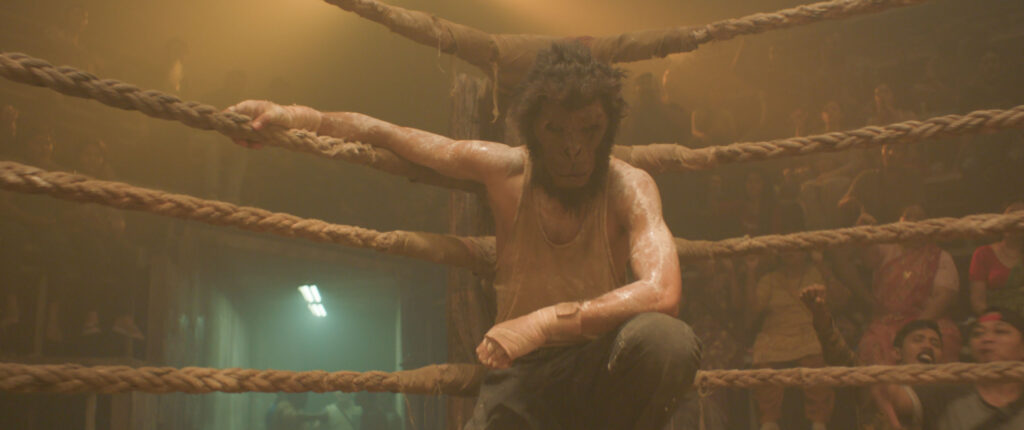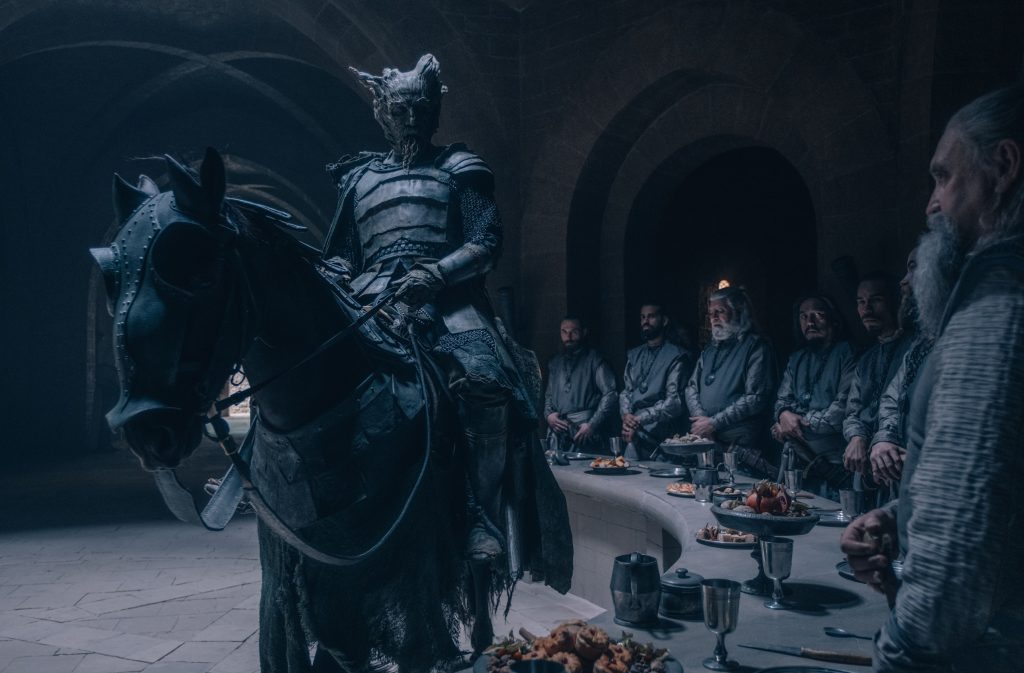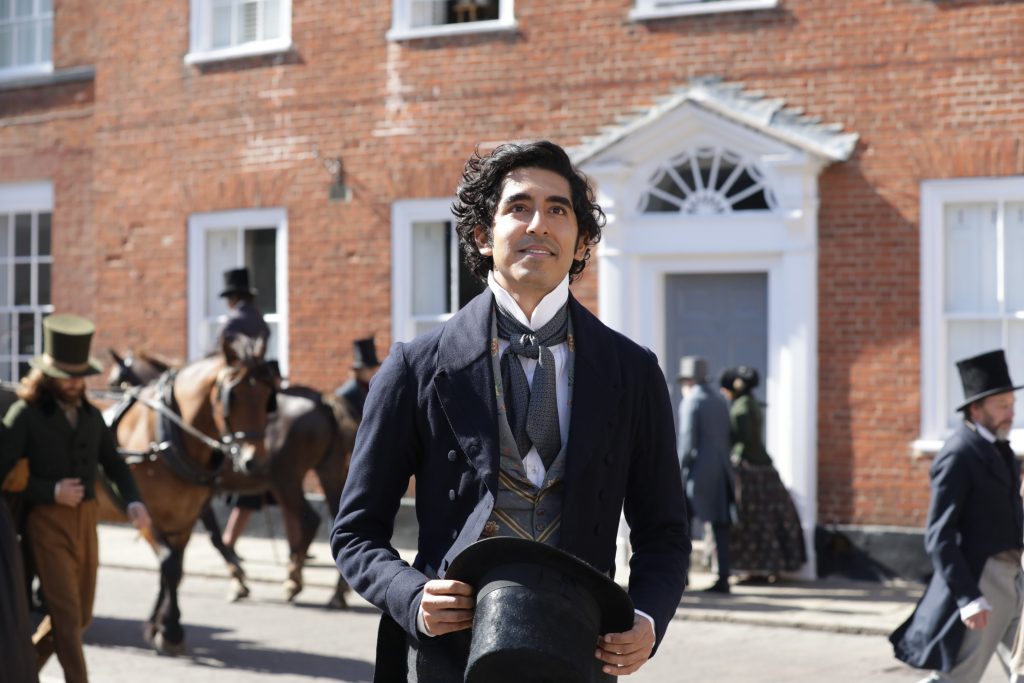April 5, 2024
by Carla Hay

Directed by Dev Patel
Some language in Hindi with subtitles
Culture Representation: Taking place in India, the action film “Monkey Man” (inspired by the legend of monkey deity Hanuman) features a predominantly Asian cast of characters (with some white people) representing the working-class, middle-class and wealthy.
Culture Clash: An anonymous man goes undercover at a social club catering to corrupt leaders, in order to get revenge on the people responsible for massacring his village (including his mother) when he was a child.
Culture Audience: “Monkey Man” will appeal primarily to people who are fans of filmmaker/star Dev Patel and high-octane, stylish action movies with good acting.

“Monkey Man” proudly shows influences from the “John Wick” movie series and classic Asian action flicks. As a star and filmmaker, Dev Patel gives the stylish “Monkey Man” the type of soul that sets it apart from most other violent revenge movies. “Monkey Man” doesn’t do anything particularly groundbreaking with its story, but the movie has a passion and a socioeconomic consciousness that make it a film that has a lot to say about vigilante justice.
Patel (who is best known as an actor) wrote and directed “Monkey Man,” which is his feature-film directorial debut. He is also one of the producers “Monkey Man,” which takes place primarily in the fictional city of Yatana, India. (“Monkey Man” was filmed mostly in Batam, Indonesia.) The movie takes a bleak view of society as a dangerous place where police and other law enforcement can’t be trusted to give justice because too many of them are corrupt.
“Monkey Man” is a simple story of an unnamed man (played by Patel), listed as Kid in the film’s end credits, who is out to get revenge on the people responsible for the massacre of his village when Kid was about 8 or 9 years old. (Jatin Malik has the role of Kid as a child.) Kid’s compassionate single mother Neela (played by Adithi Kalkunte) was one of the people murdered. As shown in flashback, Neela was raped and killed by a ruthless police chief named Rana Singh (played by Sikandar Kher) while Kid was hiding in their home and witnessed this brutal murder.
Throughout “Monkey Man,” there are flashbacks to the anonymous vigilante’s past that show snippets of information until this full picture emerges. One of his treasured childhood memories is his mother telling him the story of Hanuman, a heroic and powerful monkey deity. Viewers find out that he has the alias Bobby when he goes undercover as adult, because he uses a product called Bobby’s Powdered Bleach as a way to get revenge in a particular scene in the movie.
Kid makes money as an underpaid underground mixed-martial arts fighter who wears a monkey mask. However, he also gets a job as a dishwasher and then as a waiter at a secretive and elite social club called Kings Club, where powerful and corrupt leaders gather to indulge in a lot of decadence involving sex and drugs. Kings Club is essentially a brothel, where many of the sex workers are models or former beauty contestants.
Kid knows Rana is a regular customer at Kings Club, because of a Kings Club matchbook that Kid saw in Rana possession when Rana murdered his mother. Kid cons his way into getting a job at Kings Club by arranging for a pickpocket to steal the purse of Kings Club manager Queenie Kapoor (played by Ashwini Kalsekar), so that Kid can pretend to be do-gooder returning the purse to her. Instead of accepting Queenie’s gift of a cash reward, Kid tells her that he wants a “job that no one wants to do” at the club instead.
Queenie is a foul-mouthed, nasty-tempered boss who verbally abuses people, including her lackey gofer Alphonso (played by Pitobash), who is weasely, talkative and most of the movie’s comic relief. Alphonso has a black auto rickshaw (also known as a tuk-tuk) that he has nicknamed Nicki (after hop-hop star Nicki Minaj), because, as Alphonso describes the tuk-tuk: “Big bumper. Nice headlights.” Alphonso ends up being the closest person to get Kid’s trust at Kings Club.
Kid and a Kings Club sex worker named Sita (played by Sobhita Dhulipala) have a mutual attraction to each other, but Kid is too consumed by his vendetta to have time for any romance. Still, Kid and Sita exchange “what if” glances at each other to indicate that they are both thinking what would happen if they had met under different circumstances. Sita’s background information remains a mystery in the movie.
Other characters who are prominently featured in “Monkey Man” represent different aspects of the socioeconomic and class systems and how they are exploited to gain power. Baba Shakti (played Makarand Deshpande) is a world-famous spiritual guru who grew up in poverty but whose close association with many wealthy and powerful celebrities have made him wealthy and powerful too. Although he pretends to be about enlightenment and tolerance, Baba Shakti has endorsed the fictional Sovereign Party, which supports discrimination and persecution of minorities such as transgender people.
Someone who is a close ally of Baba Shakti is a Sovereign Party politician named Adesh Joshi (played by Vijay Kumar), who is currently running for an election. On a lesser level, Kid has conflicts with a sleazebag named Tiger (played by Sharlto Copley), the emcee at the underground fight club where Kid often takes a beating. Tiger takes pleasure in seeing Kid lose matches. Tiger also doesn’t pay Kid enough money if Tiger thinks Kid didn’t bleed enough in a match.
During the course of the story, Kid encounters a mystical guru named Alpha (played by Vipin Sharma), the leader of an androgynous “third-gender” tribe knows as the hijra. (A few of the scenes in “Monkey Man” are quite psychedelic.) The hijra people live in a cave, with the implication being that they feel safer in a cave than they do living amongst regular society because of the persecution they would experience as transgender or gender-fluid people.
“Monkey Man” fully acknowledges how much it’s inspired by the “John Wick” movies in a scene where Kid goes to an illegal gun dealer to buy a gun. The gun dealer offers to sell a TTI gun “just like in the first ‘John Wick’ movie,” he tells Kid. Kid declines this offer and says he wants a gun that is “small but effective,” so he ends up buying a small pistol. There’s also a cute dog that the hero takes care of briefly, just like there’s a cute dog briefly taken care of by the hero in the first “John Wick” movie. (The dog in “Monkey Man” is a stray and fortunately is not killed in the movie.)
The cinematography in “Monkey Man” is often frenetic and lit in various shades of neon. The movie also has montages that are edited almost like music videos. This style will be enjoyed by most viewers but disliked by others. “Monkey Man” has a lot of high-octane action and well-choreographed fight scenes that get very bloody and often require suspension of disbelief. But it’s in the hero’s quieter moments that viewers get more authenticity and a deeper understanding of him that will linger with viewers after the movie ends.
Universal Pictures released “Monkey Man” in U.S. cinemas on April 5, 2024.




